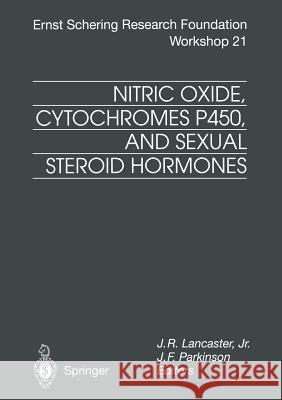Nitric Oxide, Cytochromes P450, and Sexual Steroid Hormones » książka
Nitric Oxide, Cytochromes P450, and Sexual Steroid Hormones
ISBN-13: 9783662035054 / Angielski / Miękka / 2012 / 310 str.
The discovery of mammalian nitric oxide (NO-) synthesis from I-ar- ginine has led to profound increases in our understanding of basic physiological and pathophysiological processes. This understanding has been achieved by major advances in several areas. Three major ni- tric oxide synthase (NOS) isoforms have been identified at the protein and gene level and their specific tissue localization has been linked to processes subject to regulation by NO-. The molecular basis for the di- verse effects of NO- on cell function has been shown to derive from its chemical reactivity with oxygen-containing species and both heme and non-heme iron-dependent enzymes. The potential regulation of heme- dependent enzymes such as cytochromes P450, guanylate cyclase, cy- clooxygenase, and mitochondrial cytochrome oxidase continues to emerge as a key area in NO- research. In addition, it has become clear that the expression of NOS isoforms and NO- release from cells is subject to regulation by sexual steroids and that, in tum, NO- has the potential to regulate steroid biosynthesis via inhibition of cytochromes P450 involved in steroidogenesis. These recent observations on interactions between the NO-/NOS and cytochrome P450/sexual steroid pathways have important implica- tions for understanding fundamental mechanisms involved in endocri- nological processes. They are also likely to lead to novel insights and novel therapeutic approaches for the management of pathophysiologi- cal conditions associated with alterations in sexual steroid hormones.











